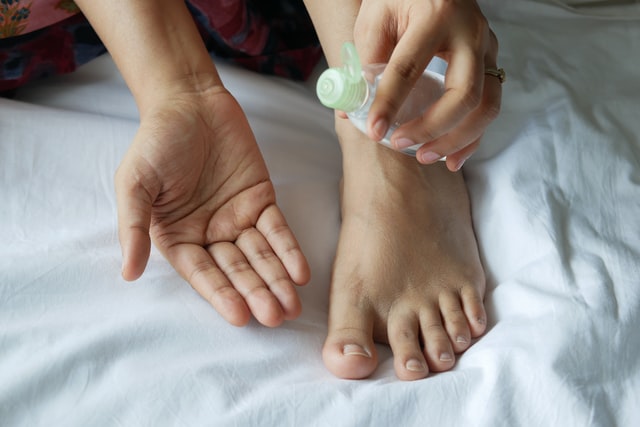According to WHO, Fungal infection toenails is quite common diseases. It occurs in about 27% of people. It is important not to self-medicate and seek medical help at the first alarming symptoms.
Risk factors
Any person faces fungi that cause various types of mycosis. They live in the environment, live in the skin. There are factors that increase the risk of onychomycosis:
- weakened immunity;
- recent severe infectious diseases;
- nail damage;
- diabetes mellitus;
- excessive sweating of the feet;
- long-term wearing of tight shoes made of low-quality materials;
- age over 60;
- deterioration of blood circulation in the capillaries at the fingertips.
It is also known that sooner or later most athletes face this disease, who spend much time in sports facilities, visit public showers every day. There is even a term Athletes foot condition.
How to recognize nail fungus
- The periarticular plate flakes off, exfoliates.
- White spots are visible under it.
- The nail thickens.
- It becomes dull, turns yellow.
- Rough to the touch.
- Burrs are actively formed on it.
- The surface is uneven, ribbed.
Any of these symptoms should alert and become a reason to go to the doctor. Do not self-medicate. It is unlikely that you will be able to determine which type of fungies caused the disease.
Rules during treatment
- The patient should observe anti-epidemic measures during treatment to prevent the spread of infection.
- Treat shoes with antifungal agents after wearing.
- Follow the hygiene of the feet, take a shower/bath daily.
- Avoid microtrauma, corns.
- Eliminate excessive sweating or dryness.
- Change socks/stockings daily.
Nail damage is a dangerous and serious disease. The lack of qualified treatment can lead to the complete loss of one or more nails, infection of the skin on various parts of the body. It is strongly recommended that you do not self-medicate and do not prescribe medications yourself. Only a dermatologist knows how to cure nail fungus.
Photo by Towfiqu barbhuiya on Unsplash






